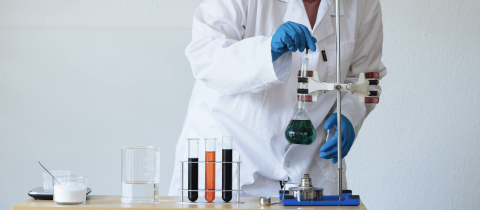Just four months after Apollo 11’s historic landing on the moon in 1969, “Intrepid,” Apollo 12’s lunar lander, made a perfect landing. It was expected that in April of 1970, “Aquarius,” Apollo 13’s lander, would do the same at a site designated as “Fra Mauro.” But we were never to hear the words, “Frau Mauro here, Aquarius has landed.” Instead, the world was shaken by astronaut Jack Swigert’s iconic words. “okay, Houston, we’ve had a problem here.” Indeed, there was a problem. On the way to the moon, an oxygen tank in the Service Module upon which the proper functioning of the Command Module depended, exploded! The oxygen was needed to combine with hydrogen in fuel cells to generate the electric power, as well as to produce water for the Command Module. Without the fuel cells, the Command Module had to rely on a small amount of stored water and on batteries for electricity. The moon landing of course had to be aborted and plans were quickly made to swing the space ship around the moon and place it on a path towards the Earth. The battery power in the Command Module would have to be saved for the maneuvering needed for re-entry into the Earth’s atmosphere.
That journey would take days, far too long for the astronauts to be able to stay in an incapacitated Command Module. Plans were drawn up for a transfer to the lunar lander which would serve as a “lifeboat.” The Aquarius was equipped with an oxygen supply, battery power as well as food and water that were to have served for the time spent on the lunar surface. But it was not equipped with enough carbon dioxide scrubbers to last for the time that would be required to make the journey back to Earth.
Humans have to inhale oxygen in order to allow cells to “combust” carbohydrates and fats for the production of energy. But like any other combustion of organic matter, this results in the release of carbon dioxide. While the gas is not toxic, it is heavier than air and can displace it, meaning that a significant build-up in a closed environment can lead to asphyxiation.
Obviously then, carbon dioxide has to be removed from the air in sealed systems such as submarines or space ships. The usual method is to circulate the air through carbon dioxide “scrubbers” that are filled with lithium hydroxide, a chemical that reacts with carbon dioxide gas to produce solid lithium carbonate. Engineers on the ground went to work and devised an ingenious way to use the lithium hydroxide canisters from the command module that were not compatible in shape to fit into the lunar module’s scrubbing system. A clever use of the available canisters, cardboard, plastic bags, and duct tape resulted in a makeshift filter system that saved the astronauts’ lives as far as breathing was concerned. But there was still the problem of jettisoning the crippled Service Module and the lunar lander after the astronauts had climbed back into the underpowered Command Module. Scientists on the ground, including some at the University of Toronto, devised emergency procedures to do this and then waited with bated breath for successful re-entry through the atmosphere.
Re-entry on a lunar mission is accompanied by a communication blackout as the tremendous heat generated by the friction of the capsule traveling through the atmosphere ionizes the air around it and prevents radio signal transmission. This normally lasts about four minutes but the blackout during Apollo 13's reentry lasted six minutes, about 87 seconds longer than had been expected. This caused a lot of concern on the ground for fear that the explosion had damaged the capsule’s heat shield which could have meant incineration for the astronauts. There was great relief when radio contact was re-established, followed by a safe splashdown in the South Pacific.
Chalk one up for human ingenuity and duct tape.







